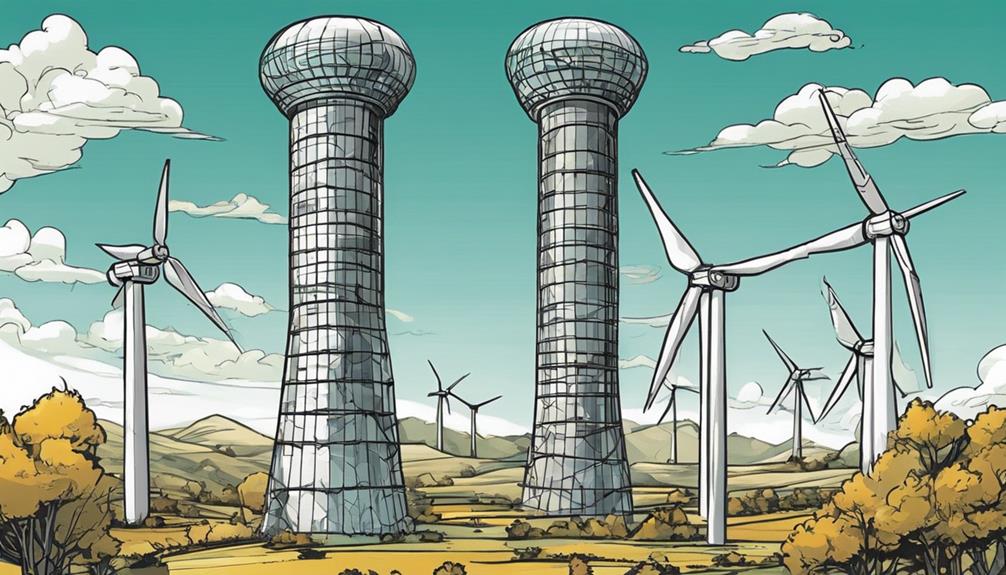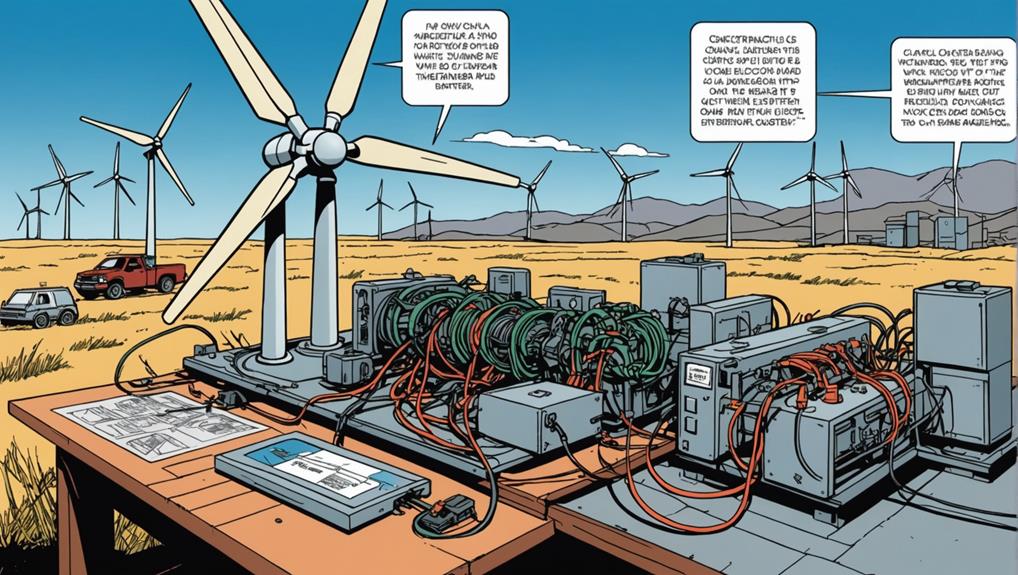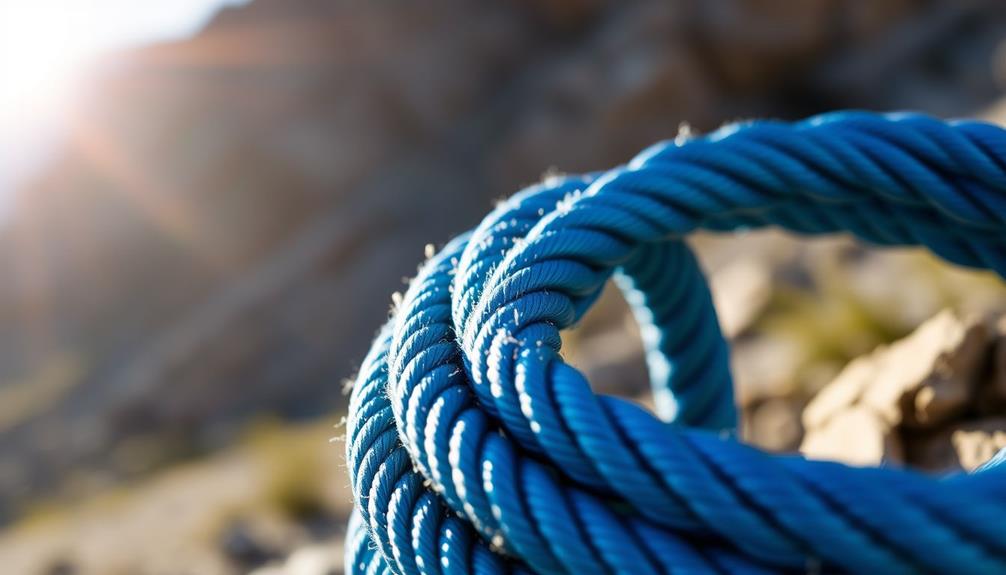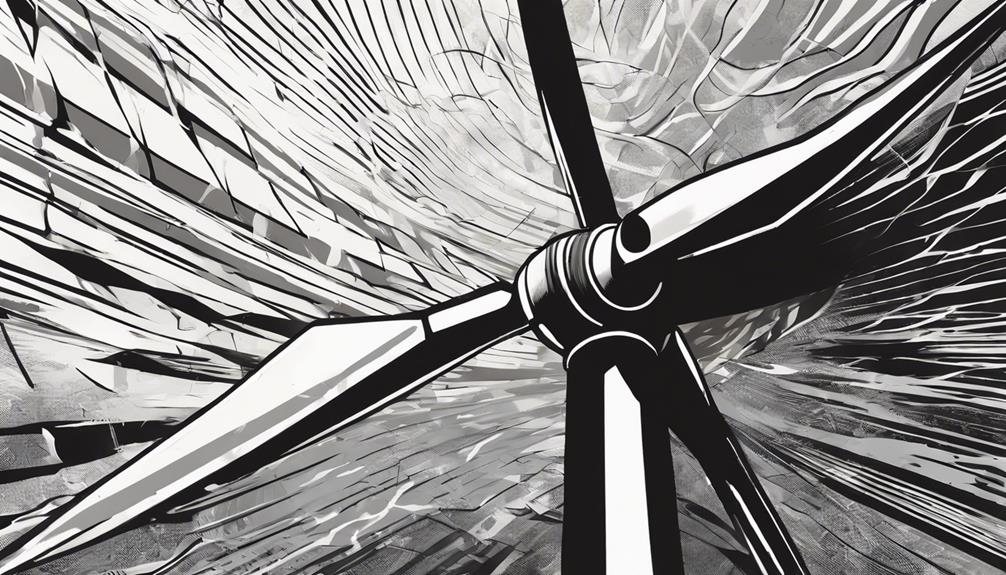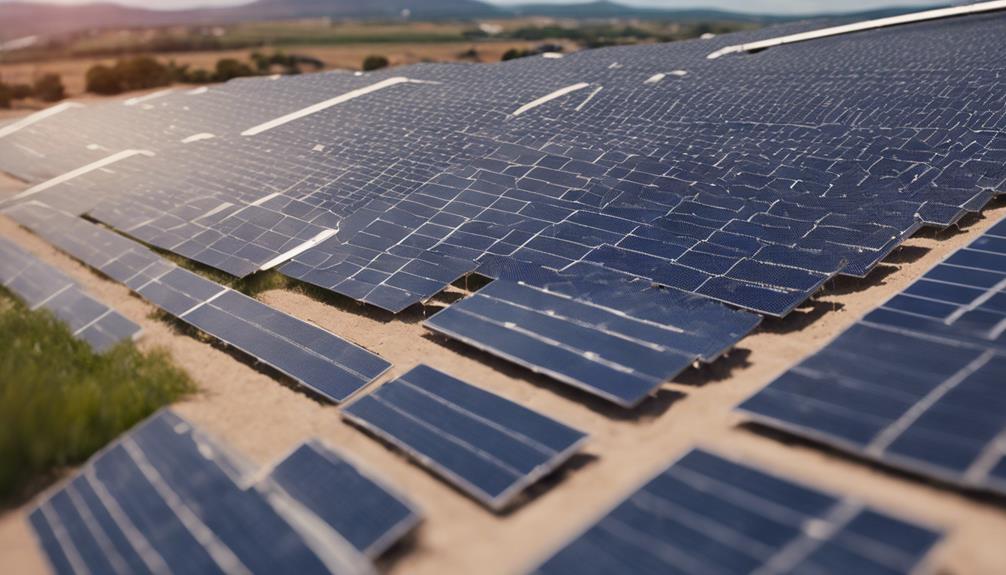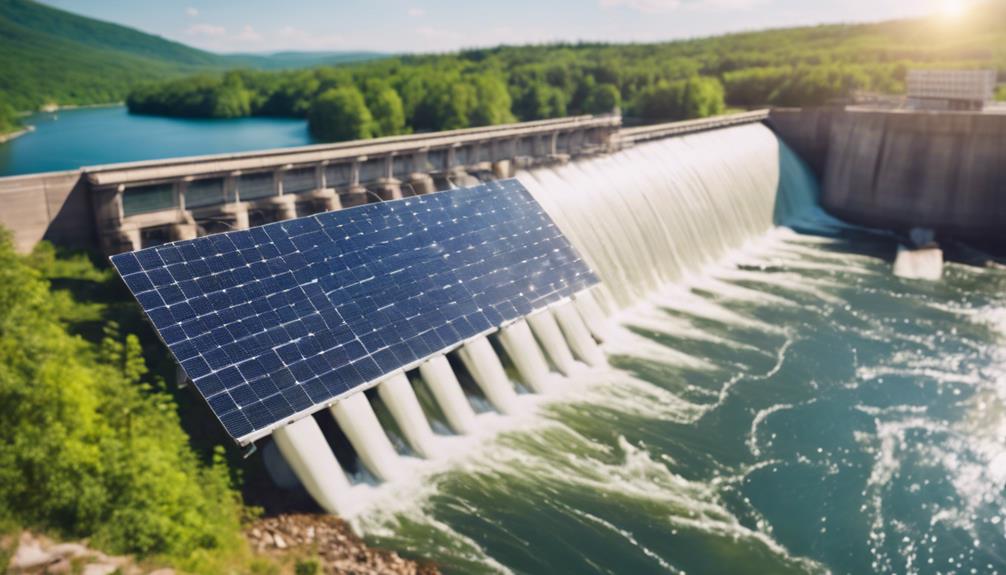When designing wind turbine towers, prioritize taller structures for increased energy output. Embrace innovative techniques like pre-stressed concrete or steel to enhance durability and strength. Optimize tower shapes to withstand wind loads effectively. Address transportation challenges by coordinating specialized logistics. Consider spiral-welding techniques to accelerate construction and reduce steel usage. Explore 3-D printed concrete pedestals for improved structural integrity. These key factors and innovations play an essential role in maximizing energy efficiency and output.
Key Takeaways
- Maximize energy output with taller tower structures.
- Utilize innovative materials like 3-D printed concrete.
- Optimize design for higher wind speeds and land use.
- Focus on cost-effective construction solutions.
- Incorporate advanced manufacturing techniques for efficiency.
Tower Height and Design Considerations
When considering wind turbine tower height and design, maximizing energy output through taller structures and innovative design techniques is essential. Taller towers allow for increased land area utilization and capture higher wind speeds, enhancing the overall energy output of the wind turbine.
By installing larger rotors on these taller towers, the potential for power generation is maximized due to the increased wind exposure at greater heights.
Furthermore, structural design plays a critical role in ensuring the tower's strength and durability. Innovations such as pre-stressed concrete and post-tensioning techniques have been developed to enhance the structural integrity of wind turbine towers. These advancements not only increase the tower's ability to withstand high wind speeds but also contribute to its dynamic stability, ultimately reducing energy costs and improving efficiency.
In essence, optimizing tower height and structural design are key considerations in the development of wind turbine systems to harness the power of wind energy effectively.
Structural Materials and Innovations
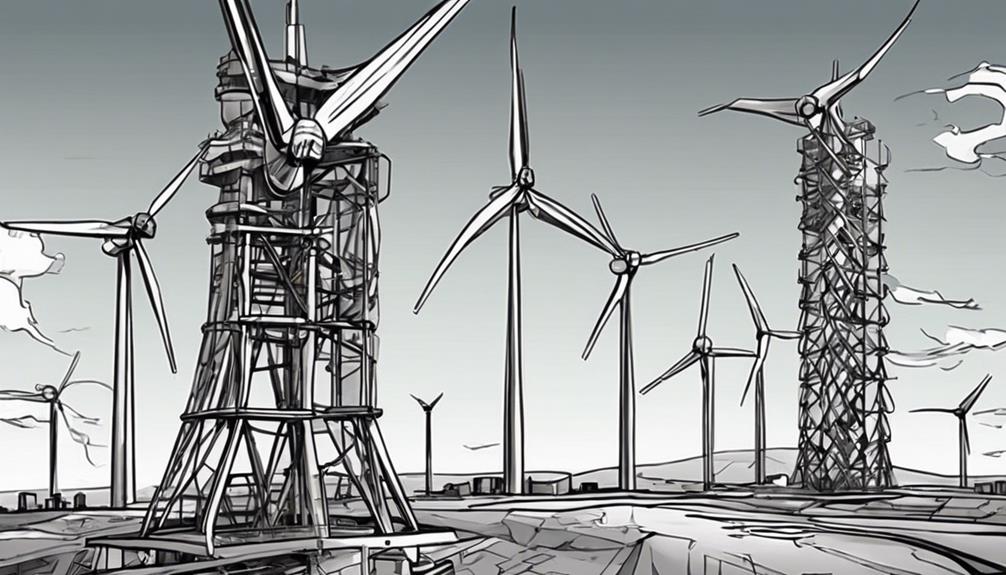
When considering wind turbine tower design, your focus should be on:
- Tower material selection
- Innovative design techniques
- Cost-effective construction solutions
These elements play an essential role in ensuring the structural integrity, longevity, and overall performance of the tower.
Tower Material Selection
Selecting the appropriate structural materials for wind turbine towers is essential to guarantee their strength and longevity in operation. When it comes to tower material selection, two primary options stand out: pre-stressed concrete and steel. Pre-stressed concrete is favored for its ability to withstand compressive forces and support the tower's weight efficiently. On the other hand, steel is widely used in wind turbine towers due to its strength and durability, making it a reliable choice for tower components. Innovations in materials, such as 3-D printed concrete, are also being explored to enhance tower construction and potentially improve overall tower performance.
To highlight the differences between pre-stressed concrete and steel in wind turbine tower construction, consider the following table:
| Material | Strength | Durability |
|---|---|---|
| Pre-stressed Concrete | High | Moderate |
| Steel | Very High | High |
Innovative Design Techniques
Innovative wind turbine tower designs leverage pre-stressed concrete and advanced construction techniques to enhance structural strength and improve tower performance.
Pre-stressed concrete is a key material in reinforcing wind turbine towers, addressing tension weaknesses and increasing overall stability.
Post-tensioning techniques further enhance the structural integrity by minimizing on-site construction connections, reducing potential points of weakness.
Research efforts at ND Energy focus on optimizing tower shapes in combination with pre-stressed concrete to bolster resistance against wind loads, ensuring the towers can withstand harsh environmental conditions.
Cost-Effective Construction Solutions
Using pre-stressed concrete in wind turbine tower construction is a cost-effective approach that enhances structural strength and stability. Pre-stressed concrete is a traditional material adapted for ultra-tall wind turbine towers, offering cost-effective construction solutions. Towers incorporating post-tensioning techniques address tension weaknesses with minimal on-site construction connections required. Structural design innovations liken tower structures to tension resistance in bread, underscoring the importance of bolstering tower strength. The utilization of pre-stressed concrete in tower components not only fortifies infrastructure like bridges and buildings but also serves as a cost-effective medium for tower structures. ND Energy's emphasis on pre-stressed concrete and optimized tower shape aims to heighten resistance and diminish wind loads, promoting efficient wind turbine tower construction.
| Advantages of Pre-Stressed Concrete in Tower Construction |
|---|
| Enhances structural strength |
| Cost-effective construction solutions |
| Improves tower stability |
| Reduces maintenance costs |
Transportation Logistics for Tower Components
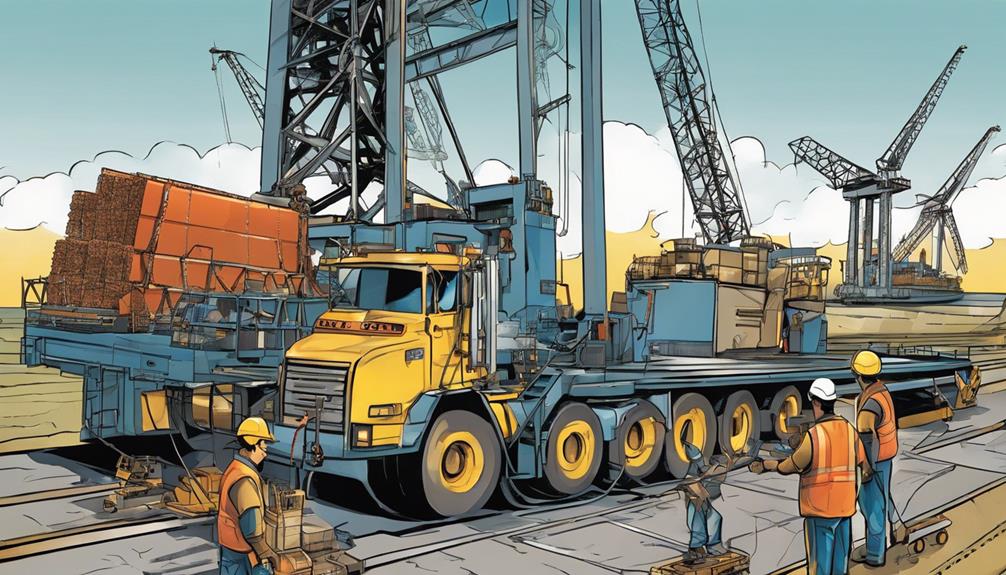
When transporting wind turbine tower components, you'll need to take into account the challenges of moving large and heavy sections to project sites. Specialized trucks, trailers, and permits are required for transporting towers that can exceed 100 meters in height.
Efficient transportation logistics play an important role in ensuring timely and cost-effective tower installations.
Tower Component Logistics
Specialized vehicles, permits, and routes are necessary for safely transporting the large and heavy tower components of wind turbines to their designated sites.
When considering tower component logistics for wind turbine towers, several key points must be taken into account:
- Size and Weight Challenges: Tower components, such as steel sections and concrete bases, present logistical challenges due to their significant size and weight.
- Specialized Transportation: Transportation logistics for tower components require specialized vehicles, permits, and routes to guarantee safe delivery to wind farm sites.
- Efficient Planning: Efficient transportation planning is vital to minimize costs and delays during the erection of wind turbine towers.
- Off-Site Component Manufacturing: Components like tower sections and bases are often manufactured off-site and then transported to the wind farm location for assembly.
Proper coordination between manufacturers, logistics companies, and wind farm developers is essential for the successful transportation of tower components to their intended sites.
Efficient Transport Solutions
Transporting wind turbine tower components efficiently requires specialized trucks and equipment due to their size and weight. The transport logistics for these components are essential for the successful execution of wind turbine projects. Tall tower sections are often divided into smaller segments for transportation to overcome size limitations.
Specialized trucks equipped to handle heavy and oversized components play a pivotal role in ensuring smooth transit. However, shipping challenges such as road restrictions, weight limits, and the need for precise coordination pose significant obstacles. Overcoming these challenges is necessary to guarantee timely delivery and assembly of wind turbine towers.
Spiral-Welding Techniques in Tower Construction
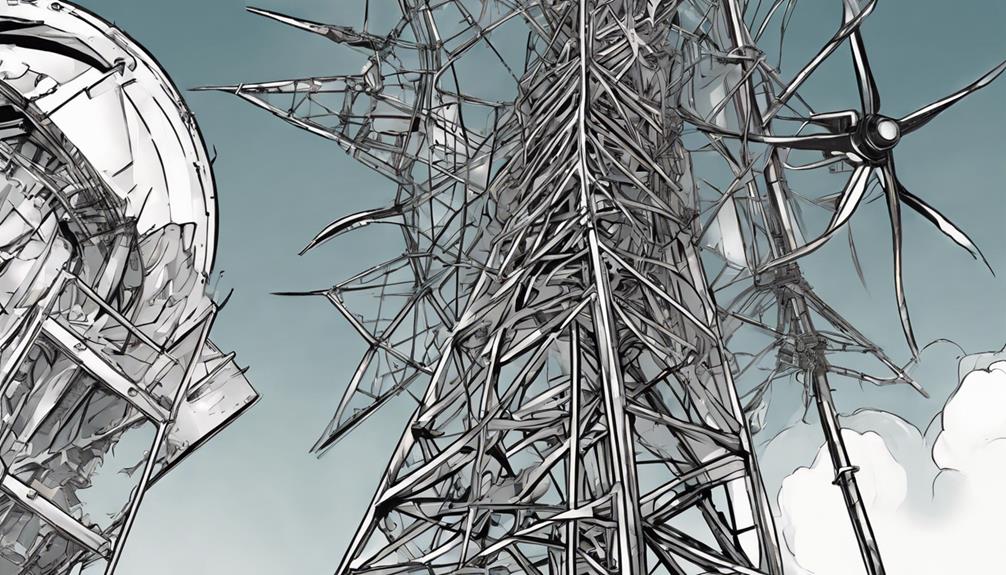
Keystone Tower Systems employs an innovative spiral-welding technique to accelerate the construction of tall wind turbine towers. This method revolutionizes tower construction by reducing steel usage and streamlining assembly, ultimately enabling the construction of towers exceeding 140 meters in height.
Here are some key points regarding the spiral-welding technique:
- Efficiency: Spiral-welding expedites the construction process, saving time and resources.
- Cost-Effectiveness: By reducing steel requirements, this technique helps lower construction costs.
- Height Capabilities: Towers over 140 meters can be efficiently built using this method.
- Addressing Challenges: Keystone's approach tackles transportation obstacles, enhancing the installation of tall wind turbine towers.
Spiral-welding techniques not only improve on-site tower production but also contribute to the overall efficiency and sustainability of wind energy projects.
3-D Printed Concrete Pedestals for Towers

Utilizing 3-D printed concrete pedestals, GE Renewables enhances the construction of wind turbine towers by enabling customizable heights and reducing transportation constraints. These concrete pedestals, reaching over 140 meters in height, provide sturdy support for tall wind turbine towers while offering flexibility in design. On-site production of these pedestals minimizes logistical challenges and lowers construction expenses, making wind energy projects more cost-effective.
To further understand the impact of 3-D printed concrete pedestals in wind turbine tower construction, let's take a closer look at their key features:
| Features | Benefits |
|---|---|
| Customizable Heights | Enable tailored tower designs to suit specific project needs |
| Reduced Transportation | Minimize logistical complexities and associated costs |
| On-site Production | Enhance project feasibility and efficiency |
| Cost-Effective | Lower construction expenses and overall project costs |
Advantages of Accessing Higher Wind Speeds
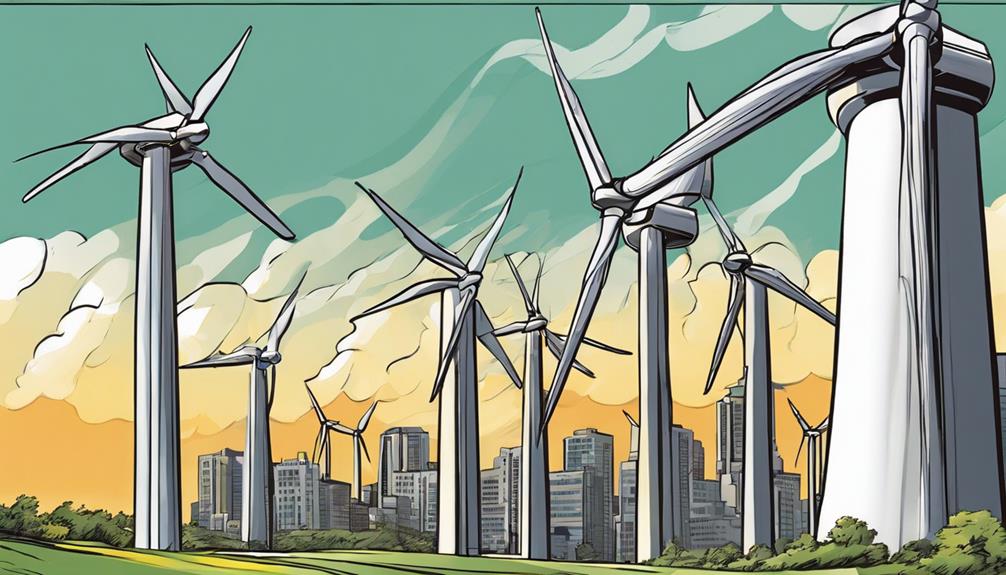
Accessing higher wind speeds with taller wind turbine towers significantly boosts energy production and efficiency. The advantages of harnessing these higher wind speeds include:
- Increased Energy Output: Taller tower designs allow wind turbines to access stronger and more consistent wind speeds, resulting in higher energy production.
- Enhanced Energy Yield: Capturing higher wind speeds at greater heights leads to improved efficiency and overall performance of wind turbines.
- Improved Capacity Factors: By reaching higher wind speeds, taller towers can achieve higher capacity factors, maximizing the potential energy output.
- Optimized Wind Energy Resources: Accessing higher wind speeds with advanced tower designs is vital for fully utilizing the potential of wind energy and increasing energy yield.
Cost Reduction and Efficiency Improvements
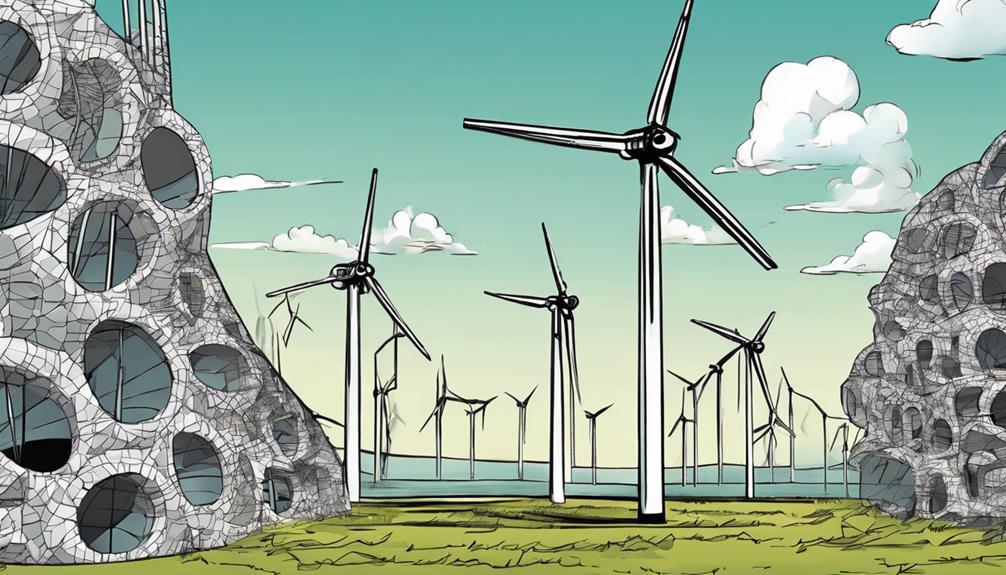
To achieve cost reduction and efficiency improvements in wind turbine tower design, DNV offers specialized services tailored to optimize structural integrity and performance. By combining load calculations with turbine and tower design, DNV provides cost-effective solutions while ensuring structural integrity. State-of-the-art analysis methods are utilized to guarantee efficiency in tower design. Customer design reviews further enhance optimization and industry standards adherence. DNV's tailored analysis options meet unique project requirements, enhancing overall efficiency and cost-effectiveness of wind turbine towers. With over 20 years of expertise in wind turbine engineering, DNV focuses on developing integrated tower designs for onshore and offshore projects to reduce lifecycle costs.
| DNV Services for Tower Design | Benefits | Details |
|---|---|---|
| Load Calculations & Design Optimization | Cost-effective solutions | Combines load calculations with design to reduce costs |
| State-of-the-Art Analysis Methods | Structural Integrity | Ensures efficiency and structural integrity |
| Customer Design Reviews | Optimization & Standards | Enhances optimization and ensures industry standards compliance |
| Tailored Analysis Options | Efficiency & Cost-effectiveness | Meets unique project requirements for enhanced efficiency |
| Integrated Tower Designs | Lifecycle Cost Reduction | Focuses on integrated designs for onshore and offshore projects |
Role of Innovative Manufacturing Techniques
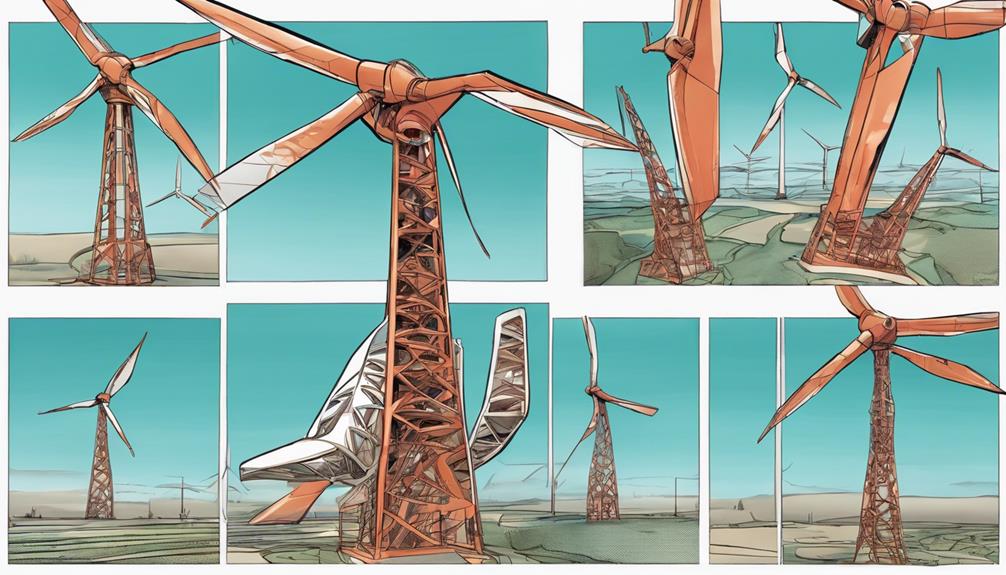
Incorporating innovative manufacturing methods significantly enhances the efficiency and sustainability of wind turbine tower production. These methods play an essential role in reducing construction costs and increasing the overall effectiveness of wind energy projects.
Here are some key points to ponder:
- Keystone Tower Systems utilizes a spiral-welding technique to expedite the construction process of tall wind turbine towers.
- GE Renewables integrates 3-D printed concrete pedestals with steel tower sections, allowing for the construction of towers exceeding 140 meters in height.
On-site tower production mitigates transportation challenges and helps in cutting down construction expenses for wind energy initiatives. Innovative manufacturing processes support the production of wind turbine towers directly at project sites, leading to a decrease in emissions associated with transportation.
As the demand for renewable energy continues to grow, the adoption of these innovative manufacturing methods will be pivotal in meeting sustainability goals while optimizing efficiency in wind turbine tower construction.
Sustainable Future in Wind Energy
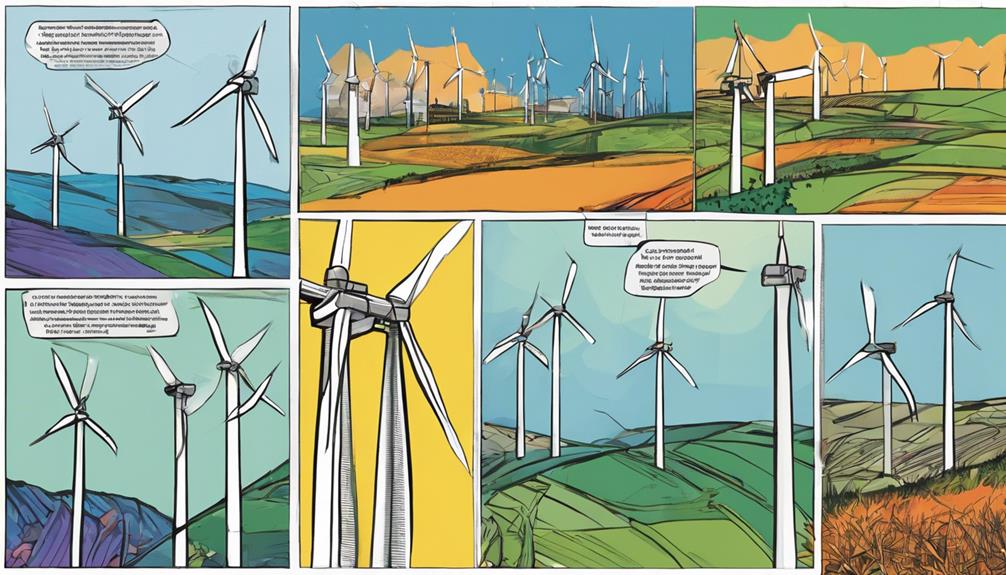
Advancements in wind turbine design and tower technology are propelling the sustainable future of wind energy forward, driven by innovative manufacturing techniques like 3-D printed concrete pedestals. Companies such as Keystone Tower Systems and GE Renewables are at the forefront, leading the industry towards affordable clean energy solutions.
By utilizing on-site tower production, transportation constraints and construction costs are reduced, thereby supporting the growth of wind energy projects. This shift towards sustainable practices not only aids in meeting climate and renewable energy goals but also contributes to economic and environmental stability.
The continuous innovation within the wind industry is pivotal for driving progress and ensuring a greener future. Embracing these advancements in tower design and wind turbine technology is key to fostering a more sustainable energy landscape, paving the way for a cleaner and more efficient tomorrow.
Frequently Asked Questions
What Are the Key Design Features of a Wind Turbine?
To design a wind turbine, key features include rotor blades capturing wind energy, nacelle housing the generator, and tower supporting the structure. Towers elevate the rotor for better wind speeds. Innovative designs focus on maximizing height for energy efficiency.
What Factors Should Be Considered When Designing Wind Turbine Blades?
When designing wind turbine blades, you must consider aerodynamic efficiency, structural integrity, material selection, and length optimization. Taking into account factors like wind speed variability, turbulence, and fatigue loads will help maximize energy production.
What Are the Factors to Be Considered in Design of a Turbine?
When designing a turbine, consider factors like blade length, rotor diameter, tower height, and nacelle placement. Wind speed, site conditions, and energy goals impact decisions. Focus on aerodynamic efficiency, structural integrity, and material selection for peak performance.
What Are the Factors Affecting Wind Turbine Design?
To design a wind turbine, you must consider factors like blade length, nacelle type, and aerodynamic efficiencies. Offshore turbines are becoming more cost-effective, harnessing higher wind speeds for better efficiency. Major manufacturers compete to enhance design efficiency and reliability.
What are the key factors and innovations in wind turbine tower design?
When it comes to designing wind turbine towers insights, key factors and innovations include taller towers to access stronger winds at higher altitudes, advanced material technology for lighter yet stronger towers, and innovative foundation designs to withstand various environmental conditions. These factors and innovations are crucial for improving the efficiency and effectiveness of wind energy generation.
Conclusion
To sum up, the future of wind turbine tower design is bright with advancements in structural materials, transportation logistics, and manufacturing techniques.
By accessing higher wind speeds and reducing costs through innovative methods, the wind energy industry is on a sustainable path towards success.
Embrace the endless possibilities and potential of wind power for a cleaner and greener tomorrow!
